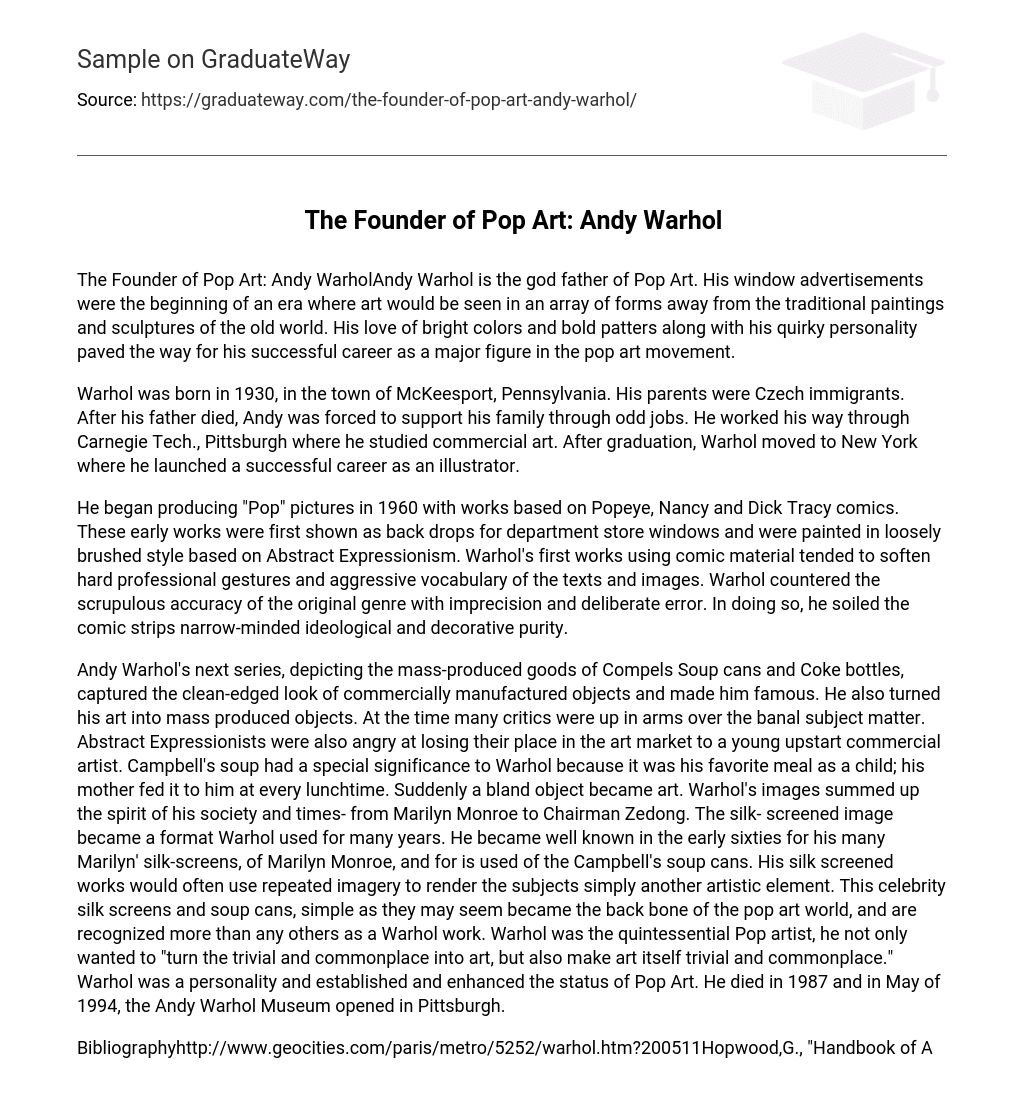Andy Warhol, the pioneer of Pop Art, transformed the art scene through the introduction of various forms that went beyond conventional paintings and sculptures. His famous window advertisements signaled a new era in which art would be encountered in fresh and dynamic ways. With his unique affinity for striking patterns and vivid hues, alongside his distinctive personality, Warhol emerged as a prominent figure within the pop art movement, carving out a path to an immensely prosperous career.
Andy Warhol was born in 1930 in McKeesport, Pennsylvania. He was a Czech immigrant and had to work various jobs to support his family after his father passed away. Warhol studied commercial art at Carnegie Tech in Pittsburgh before moving to New York where he achieved success as an illustrator.
He started creating “Pop” pictures in 1960, using characters from comics like Popeye, Nancy, and Dick Tracy. These initial pieces were originally displayed as backdrops in department store windows, and were painted with loose brushstrokes that were influenced by Abstract Expressionism. Warhol’s early use of comic material aimed to soften the strong and forceful gestures and language found in the original texts and images. By deliberately introducing imprecision and errors, Warhol challenged the strict accuracy of the comic strips and tarnished their narrow-minded ideological and purely decorative nature.
Andy Warhol gained fame through his series that showcased the mass-produced items of Campbell’s Soup cans and Coke bottles. These works captured the sleek appearance of commercially manufactured objects and established Warhol as a well-known artist. In addition, he transformed his art into mass-produced items. During that time, numerous critics were outraged by the mundane subject matter, and Abstract Expressionists were frustrated by a young commercial artist overtaking their position in the art market. However, Campbell’s soup held a special significance to Warhol as it was his preferred meal during childhood, often provided by his mother for lunch. Remarkably, this ordinary item was transformed into art.
Warhol’s artwork captured the essence of his society and era, featuring iconic figures like Marilyn Monroe and Chairman Zedong. He frequently employed the silk-screen technique to create his pieces over a long period. In the early 1960s, Warhol gained recognition for his Marilyn Monroe silk-screens and his utilization of Campbell’s soup cans. His silk-screened works often incorporated repetitive imagery, transforming the subjects into additional artistic elements. These celebrity portraits and soup can depictions played a crucial role in establishing pop art’s foundation, making them instantly recognizable as Warhol’s creations.
Warhol, the epitome of a Pop artist, aimed to transform the mundane and ordinary into art while also making art itself mundane and ordinary. He played a significant role in elevating the status of Pop Art. Warhol passed away in 1987 and Pittsburgh’s Andy Warhol Museum debuted in May 1994.
Bibliography
- http://www.geocities.com/paris/metro/5252/warhol.htm?200511
- Hopwood,G., “Handbook of Art”, North Clayton; The Specialty Press 1979Gardner, H., “Art Through the Ages”, New York; Harcourt Brace Jovanovich, 1975
- Williams, D. and Wilson B.V., “From Caves to Canvas, An Introduction To Western Aet”, Sydney; McGraw-Hill, 1992





